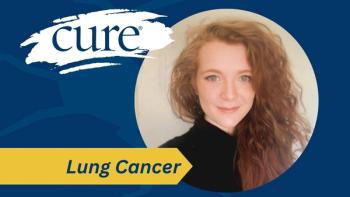
- Summer 2012
- Volume 11
- Issue 2
Light Bright: Awareness of Skin Sensitivity
Some cancer treatments can result in skin sensitivity, sunburn and rash.
Photosensitivity is a skin reaction in which certain medications and medical conditions can make the skin more sensitive, especially to sunlight, resulting in a rash or easy sunburn.
There are three main types of photosensitivity: phototoxic reactions, photoallergic reactions and radiation recall.
Causes > Many different medications can cause photosensitivity, including antibiotics, non-steroidal anti-inflammatory drugs (NSAIDs), diuretics, retinoids and some chemotherapy drugs.
In phototoxic reactions, the drug is activated by exposure to sunlight and causes damage to the skin. Phototoxic reactions may cause a burning, stinging sensation and appear as exaggerated sunburns within minutes or up to 24 hours after sun exposure. Symptoms are limited to the area of sun-exposed skin and include redness, inflammation, blistering, seeping and peeling. A phototoxic reaction typically clears up (even after re-exposure to light) once the drug is discontinued and has been cleared from the body.
Many different medications can cause photosensitivity, including antibiotics, non-steroidal anti-inflammatory drugs (NSAIDs), diuretics, retinoids and some chemotherapy drugs.
In photoallergic reactions, ultraviolet radiation (UV) exposure modifies the structure of the drug so that it is seen by the body’s immune system as an invader, which causes an allergic response. Photoallergic reactions might not occur for one to three days following sun exposure. This type of reaction usually resembles eczema, is generally long-lasting and can spread to other areas of the skin not exposed to sunlight. Photoallergic reactions may initially cause itching, followed by redness, swelling and eruption of the involved area. Some sunscreens, fragrances and occasionally antibacterial soaps can also cause photoallergic reactions when applied to the skin.
Radiation recall is a rare but severe skin reaction that occurs when certain chemotherapy drugs are administered during or soon after radiation treatment, even without exposure to sunlight. Radiation recall is characterized by one or more of the following symptoms in irradiated skin: redness, tenderness, swelling, wet sores and peeling skin. The rash usually appears a few weeks to months following radiation treatment, but it can also manifest years after therapy. Symptoms can last a couple of hours or several days and can make skin sunburn more easily. The skin may be discolored even after it has healed.
Photosensitivity can mimic infections or rashes that are due to drugs but not to photosensitivity, so sometimes a referral to a dermatologist is important to make the correct diagnosis and treatment recommendations.
Treatments for photosensitivity are aimed at treating and minimizing the symptoms.
Topical corticosteroid creams reduce inflammation, itching and burning of the affected area. The use of systemic corticosteroids should be reserved for the most severe cases. Applying cool, wet dressings or moisturizing lotion may also help.
Over-the-counter analgesics, such as acetaminophen, aspirin or ibuprofen, can ease the pain of photosensitivity rashes and blisters.
Over-the-counter oral antihistamines, such as loratadine and diphenhydramine, may also be used. More severe photoallergic reactions may require a prescription oral antihistamine.
For radiation recall, topical or systemic corticosteroids or NSAIDs help to reduce inflammation so that chemotherapy may be continued without delay. Patients should inform their doctor, so the sensitizing chemotherapy can be delayed or withdrawn to allow the skin to heal to prevent infection. Reactions often resolve within one to two weeks.
Patients can minimize symptoms and protect themselves against photosensitivity by avoiding sun exposure, wearing a wide-brimmed hat and clothing that has a tight weave, wearing broad-spectrum sunscreen on all exposed areas, applying skin moisturizers and avoiding tanning beds.
Articles in this issue
over 13 years ago
Tips on Finding Insurance Coverage for Cancer Rehabilitationover 13 years ago
Two Congressional Bills on Colorectal Cancer Introducedover 13 years ago
Recognizing Actinic Keratosisover 13 years ago
Leukemia Survival Rates Greatly Improved, Study Saysover 13 years ago
CT Challenge Survivorship Summitover 13 years ago
Q&A: Counterfeit Chemotherapy Drugs Cause Concernover 13 years ago
EPA Plans to Cut Radon Program, Despite Continued Cancer Riskover 13 years ago
Better, Stronger, Happierover 13 years ago
Questions to Ask About a Clinical Trialover 13 years ago
Expressing One’s Thoughts



